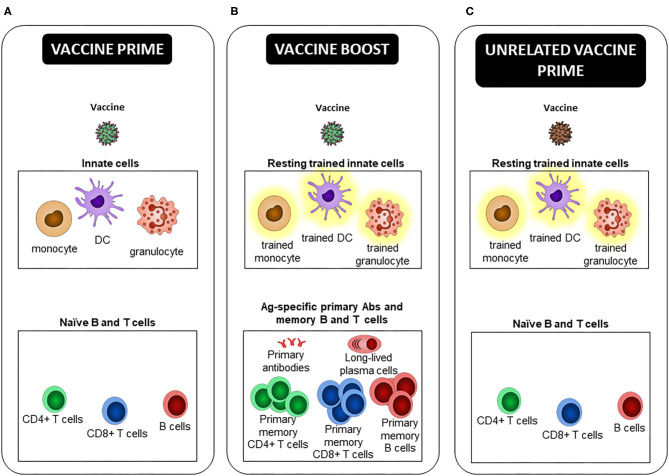Figure 2.
Trained innate immune cells, a new player in prime/boost vaccine strategies. (A) At the time of the primary injection, the early innate effector response participates to the activation of Ag specific naive B and T cells, leading to the generation of long-lived plasma cells, primary Abs and memory B and T cells, defined by an Ag-specific heightened effector response upon Ag re-encounter. (B) At the time of the vaccine boost, not only “free,” but also Ab-bound vaccine and Ag specific primary memory B and T cells, which are triggered by their cognate Ag recognition, activate innate cells. Depending on the type of vaccine, its route of administration, and the delay between immunizations, prime-induced resting trained innate cells can be present and respond better than “naive” ones to restimulation. These extrinsic, and possibly intrinsic, differences can lead to an innate effector response that differs between prime and boost, and differentially shapes the secondary effector and memory adaptive response. If and how primary Abs, and effector and memory B and T cells participate in the induction and maintenance of trained immunity is unclear. (C) In the case of a new unrelated vaccination as opposed to a homologous or heterologous boost, only potential trained HSPCs and innate cells induced by the first vaccine, as well as TRM activated after non-cognate Ag stimulation, may modulate the innate effector response and consequently the primary adaptive response to the second vaccine.

